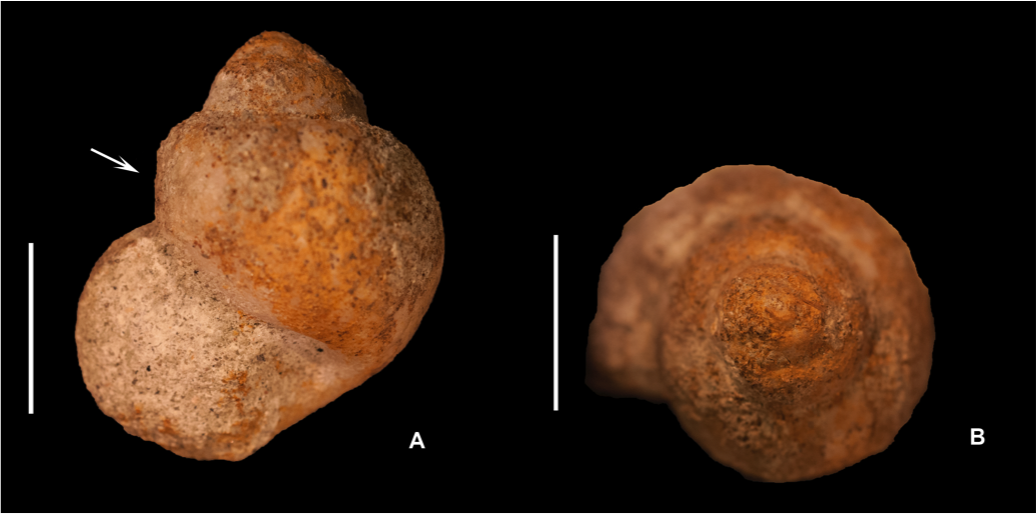Ranjeev’s research on speciation in Tanzanian gastropods is published!

Congratulations to Ranjeev Epa (MS ’17)! The research paper based on his MS thesis on systematics and morphology of Oligocene gastropods is now published in Papers in Paleontology.
Epa, Y.R., Stigall, A.L., Roberts, E.M., O’Brien, H., Stevens, N.J. 2018. Morphological diversification of ampullariid gastropods (Nsungwe Formation, late Oligocene, Rukwa Rift Basin) is coincident with onset of East African rifting. Papers in Palaeontology, 4:327-348.
Abstract:
A new freshwater gastropod fauna is described from the late Oligocene Nsungwe Formation of the Rukwa Rift Basin, Tanzania. Six new species of ampullariids are established including five species of Lanistes (L. microovum,L. nsungwensis, L. rukwaensis, L. songwellipticus and L. songweovum) and one species of Carnevalea (C. santiapillaii). These taxa occupy a morphospace region comparable to nearly half of extant Lanistes, a common and widespread genus in Africa and Madagascar. Palaeoecological evidence indicates that Nsungwe ampullariids inhabited fluvial, pond and paludal environments. Among these species are the oldest high‐spired and fluvially adapated Lanistes taxa. We suggest that Nsungwe Lanistes rapidly diversified in concert with habitat heterogeneity associated with the initiation of rifting along the western branch of the East African Rift System (EARS). Taxonomy, evolution and the biogeographical affinities of Nsungwe Formation freshwater gastropods contributes significantly to expanding the undersampled Palaeogene invertebrate fossil record of continental Africa.
Here is the university writeup about Ranjeev’s paper:
Paleontologists Find New Snail Species with Evolutionary Speed – Ohio University | College of Arts & Sciences
Snails may be physically rather slow, but the six new species identified by Ohio University researchers put on plenty of evolutionary speed when they had to. Ohio University paleontologists analyzing snail fossils from 24 to 26 million years ago have identified six new species-and published the first documentation of rapid …

